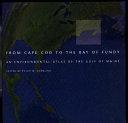
Sistem pengelolaan sumberdaya pertanian berwawasan lingkungan
Volume commemorating the 25th anniversary of Mataram University.
- ISBN 10 : UCAL:B3955343
- Judul : Sistem pengelolaan sumberdaya pertanian berwawasan lingkungan
- Pengarang : Suhubdy Yasin, Chairussyuhur Arman, Lalu Fathurrachman, Universitas Mataram, Chairussyuhur Arman, Lalu Fathurrachman, Universitas Mataram,
- Kategori : Nature
- Bahasa : id
- Tahun : 1991
- Halaman : 207
- Halaman : 207
- Google Book : http://books.google.com/books?id=TdgWAAAAIAAJ&dq=intitle:sistem+pengolahan&hl=&source=gbs_api
-
Ketersediaan :
Sistem gogo rancah ini mempunyai keuntungan lebih antara lain sebagai 'berikut
: — pengolahan tanah dapat diangsur sebelum hujan turun sehingga panen
menjadi maju dan memungkinkan frekuensi tanam meningkat. — tidak
membutuhkan genangan air pada waktu pengolahan tanah dan awal
pertumbuhan padi. — - tidak memerlukan pesemaian. — dapat terhindar dari
serangan hama ganjur di daerah endemis dimana hama ini biasanya
menunjukkan peningkatan serangan ...









